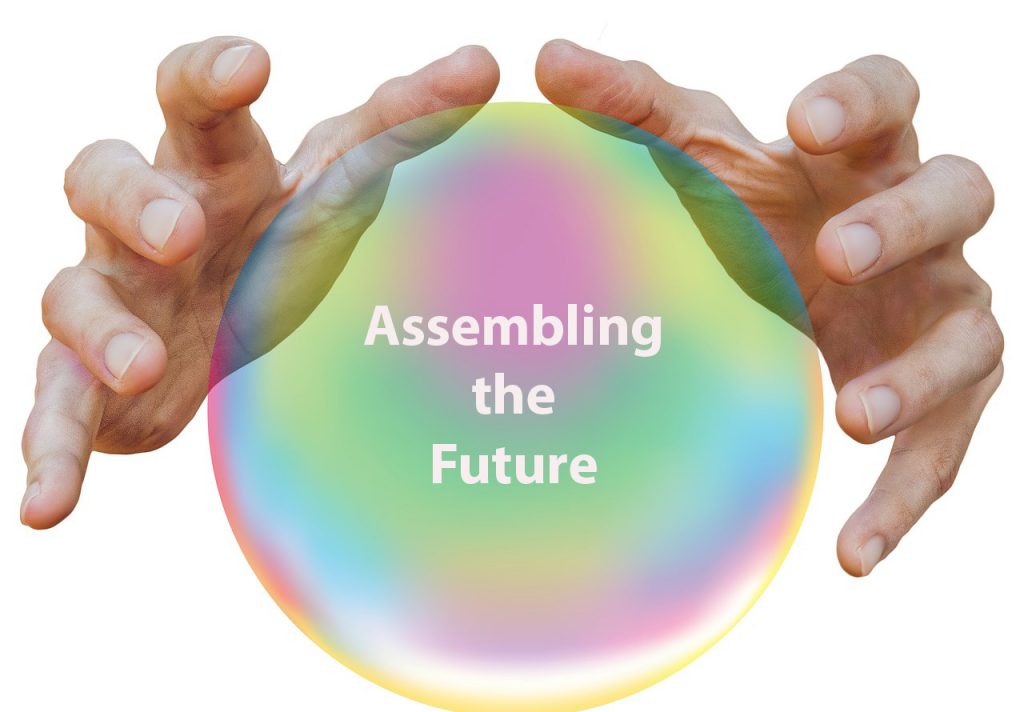An Introduction to the FutureHacking™ methodology

by Braden Kelley
The starting point for becoming your own futurist is of course to first understand what futurology (or a futurist) is. Then we must also understand what strategic and market foresight are as well.
What is Futurology (or a Futurist)?
- Futures studies, futures research, futurism or futurology is the systematic, interdisciplinary and holistic study of social and technological advancement, and other environmental trends, often for the purpose of exploring how people will live and work in the future. Predictive techniques, such as forecasting, can be applied, but contemporary futures studies scholars emphasize the importance of systematically exploring alternatives.
Source: Wikipedia
What are Strategic and Market Foresight?
- Strategic Foresight is about combining methods of futures work with those of strategic management. It is about understanding upcoming external changes in relation to internal capabilities and drivers.
- Market Foresight is about the consideration of possible and probable futures in the organization’s relevant business environment, and about identifying new opportunities in that space.
Source: Aalto University
Now we are ready to look at the four simple, but powerful steps to becoming your own futurist using the FutureHacking™ methodology:
STEP ONE: Picking the Signals That Matter
FutureSignals™ Radar & NowBuilder™ Canvas
- Identify up to the eight most critical signals to monitor or amplify in order to look back, reach an innovation goal, describe them and capture for each signal what the status quo, small change and big change scenarios might look like – and which scenario is most likely.
STEP TWO: Mapping Signal Evolution
FutureSignals™ Radar Summary & Tracking
- Summarize the most likely scenarios for up to the eight most critical signals along with their descriptions and whether you plan to monitor or amplify each. Use a tracking sheet to record changes in the signal over time – revisit and re-prioritize as needed.
STEP THREE: Choosing the Possible, Probable and Preferable Future
FutureCanvas™ & Picker (macro view)
- Leveraging your FutureSignals™ summary, create a headline for an imagined future. Then capture the problems that have been solved, how society has changed, the new problems that may now exist and what we must do to shape the future. Rinse and Repeat.
STEP FOUR: Making Your Preferable Future a Reality
FutureSignals™ & FutureCanvas™ Action Plans (micro)
- Leveraging your FutureSignals™ summary, create a headline for an imagined future. Then capture the key signals related to this headline, how the customer is changing and how the company must change in response.
These four simple steps to becoming your own futurist are accelerated by adopting the 20 new tools of the Futurehacking™ methodology that I have created.
“FutureHacking™ is the art and science of getting to the future first.”
It’s a methodology I’ve created that contains a suite of simple, but powerful tools at its core that will enable you to be your own futurist.
FutureHacking™ is designed to make foresight and futurology accessible to the average business professional.
Prototyping the Future
FutureHacking™ is a revolutionary approach that empowers cross-functional leadership teams to visually prototype the future and collaboratively create the roadmap and guideposts for manifesting your preferred, possible future.

Why is Investing in Futures Research (or a Futurist) important?
- Every stakeholder-responsible organization is compelled to realize its vision, execute its strategy, and achieve its goals – indefinitely. But, the future is uncertain. We cannot extrapolate that what has made an organization successful this year or last year will make it succeed in future years. Responsible organizations must invest in understanding the possible futures and realizing their preferable future. FutureHacking™ makes this investment much easier, cheaper and faster – helping you get to the future first.
“FutureHacking™ tools help you facilitate the future.”
Click the image to download a PDF flipbook:
Two Ways to Join the FutureHacking™ Ecosystem
- Data and trend research partners to create service offerings as an input into the FutureSignals™ component
- Futurists, consulting partners, and technology providers (interactive whiteboarding, etc.) to get FutureHacking™ certified and profit from the delivery of services to help people leverage the FutureSignals™, NowBuilder™ and FutureCanvas™ tools
One Way to Connect and Succeed
Contact me if you think you have a compelling partnership value proposition and subscribe to my newsletter below to find out when the certification program and facilitated off-site offerings are launched!
Image credit: Pixabay
![]() Sign up here to get Human-Centered Change & Innovation Weekly delivered to your inbox every week.
Sign up here to get Human-Centered Change & Innovation Weekly delivered to your inbox every week.



 Drum roll please…
Drum roll please…




